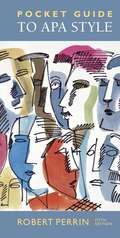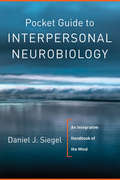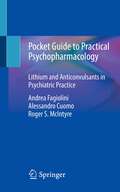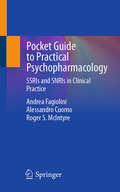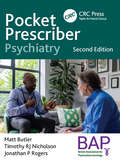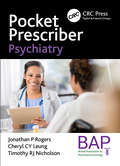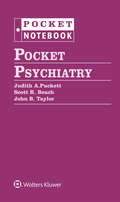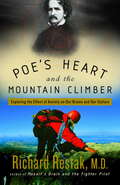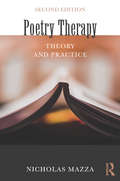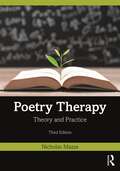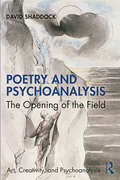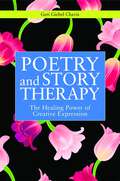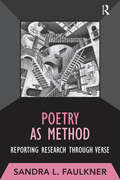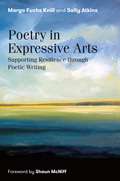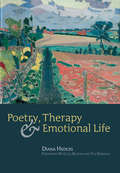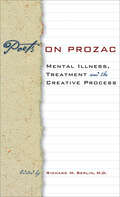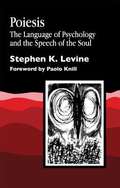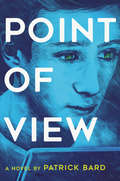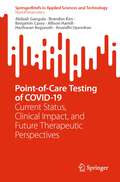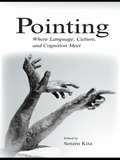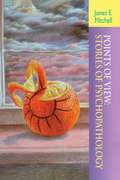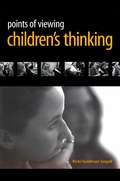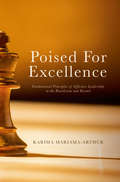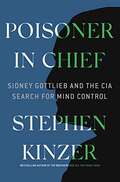- Table View
- List View
Pocket Guide To APA Style
by Robert PerrinThe POCKET GUIDE TO APA STYLE, 5E is an essential tool for writing research papers across the disciplines. Concise and thorough, the POCKET GUIDE offers straightforward explanations, annotated examples, and margin notes designed to help writers produce properly documented papers in the latest APA style. Not only less expensive and easier to use than the APA Manual, the POCKET GUIDE also includes extensive coverage of electronic sources, preparing writers to evaluate and use Internet references correctly in their research.
Pocket Guide to Interpersonal Neurobiology: An Integrative Handbook of the Mind
by Daniel J. Siegel<P> The central concepts of the theory of interpersonal neurobiology. <P> Many fields have explored the nature of mental life from psychology to psychiatry, literature to linguistics. Yet no common "framework" where each of these important perspectives can be honored and integrated with one another has been created in which a person seeking their collective wisdom can find answers to some basic questions, such as, What is the purpose of life? Why are we here? How do we know things, how are we conscious of ourselves? What is the mind? What makes a mind healthy or unwell? And, perhaps most importantly: What is the connection among the mind, the brain, and our relationships with one another? <P> Our mental lives are profoundly relational. The interactions we have with one another shape our mental world. Yet as any neuroscientist will tell you, the mind is shaped by the firing patterns in the brain. And so how can we reconcile this tension--that the mind is both embodied and relational? Interpersonal Neurobiology is a way of thinking across this apparent conceptual divide. <P> This Pocket Guide to Interpersonal Neurobiology is designed to aid in your personal and professional application of the interpersonal neurobiology approach to developing a healthy mind, an integrated brain, and empathic relationships. It is also designed to assist you in seeing the intricate foundations of interpersonal neurobiology as you read other books.
Pocket Guide to Practical Psychopharmacology: Lithium and Anticonvulsants in Psychiatric Practice
by Andrea Fagiolini Alessandro Cuomo Roger S. McIntyreThe volume presents the most important and practical information to prescribe lithium, valproate, carbamazepine and other anticonvulsants in psychiatric practice safely and successfully. The information is ready to use and easy to remember and is focused primarily on clinically relevant issues such as preliminary laboratory evaluations, drug dosages, schedules, indications, contraindications, side effects and strategies to manage them. Clinical cases and clinical pearls are provided for each medication. The volume outlines the best strategies to choose psychotropic medications skillfully. The book will be an invaluable reference for psychiatric residents and any other health care practitioner seeking for a tool that is simple, concise and immediately useful for everyday clinical practice.
Pocket Guide to Practical Psychopharmacology: SSRIs and SNRIs in Clinical Practice
by Andrea Fagiolini Alessandro Cuomo Roger S. McIntyreThis book provides the most important and practical information on prescribing SSRIs for the treatment of depression and anxiety. The volume outlines the best strategies for choosing medications based on the specific symptoms each patient presents with, and for using them safely and successfully. The information is ready to use and easy to remember; it provides practical checklists for each SSRI medication on the following topics: pharmacodynamic profile and potential efficacy for specific symptoms, indications, contraindications, and ideal candidates for the medication; laboratory monitoring and follow-up; dosages, titration, and personalization strategies; side effects and management strategies; and clinical pearls. Given its features, the book will be a valuable resource for psychiatrists, neurologists, primary care physicians, residents, and any other healthcare practitioner seeking a simple, concise, and immediately useful tool for everyday clinical practice.
Pocket Prescriber Psychiatry (Pocket Prescriber Series)
by Timothy Rj Nicholson Matt Butler Jonathan P RogersPocket Prescriber Psychiatry, 2E is a concise, up-to-date prescribing guide containing all the 'must-have' information that psychiatrists and mental health professionals need to know.This book provides the key essential information for all mental health professionals prescribing drugs and is essential for psychiatrists, mental health nurses, primary care physicians, psychologists, psychotherapists and counsellors and anyone caring for people with mental health issues.
Pocket Prescriber Psychiatry (Pocket Prescriber Series)
by Jonathan P. Rogers; Cheryl C.Y. Leung; Timothy R.J. NicholsonPocket Prescriber Psychiatry is a concise, up-to-date prescribing guide containing all the "must-have" information that psychiatrists and mental health professionals need to know. This book provides the key essential information for all mental health professionals prescribing drugs and is essential for psychiatrists, mental health nurses, primary care physicians, psychologists, psychotherapists, and counsellors and anyone caring for people with mental health issues.
Pocket Psychiatry (Pocket Notebook Series)
by John B. Taylor Judith PuckettPocket Psychiatry, a new addition to the Pocket Notebook series, is written by residents for residents. A resource for essential information, in a high-yield, easy-to-use format, designed to help students, trainees, and others navigate the initial psychiatric evaluation and management of the most commonly encountered psychiatric conditions. With an emphasis on evidence-based information, Pocket Psychiatry, provides a rare concise and accessible resource, for must-know information on hospital- and clinic-based psychiatric care — from history and physical exam to differential diagnosis testing to therapeutics — in the well known loose leaf pocket size format.
Poe's Heart and The Mountain Climber: Exploring The Effect of Anxiety on Our Brains and Our Culture
by Richard RestakAre you bombarded by a constant media feed of global terrorism, war, and rising unemployment rates—and by a mind-numbing array of ads that urge you to “ask your doctor” about the newest anti-anxiety medications? If it sometimes feels as if this country is having a collective anxiety attack, then you won’t be surprised to learn that more than 19 million Americans suffer from some form of acute anxiety. Poe’s Heart and the Mountain Climber tackles this situation head-on, with a fresh perspective and a straightforward approach to exploring and understanding our anxiety before it paralyzes us. After interviewing many experts on anxiety, and reflecting on his own many years treating anxious patients (as well as experiencing more than a few anxious moments himself), Dr. Richard Restak has organized this book around one primary principal: the best way to manage anxiety in these anxious times is to learn about it and put that learning to practical use. His message is vital and empowering: anxiety is not a mental illness that must require medication, but often a normal, biological response to stress. Anxiety is part of our genetic makeup. We wouldn’t be alive today if our ancestors had lacked the ability to anticipate dangers and threats. Anxiety is as natural a part of our existence as breathing, eating, or sleeping, and it is closely linked to our powers of reasoning. Unlike any other species, only we are able to envision future possibilities. As a result, we aren’t tethered to the here and now, but can imaginatively anticipate the good things that might happen to us. But we can also envision the bad things and, as a result, experience anxiety. We can’t have one without the other. Anxiety, therefore, isn’t something to be eliminated but, rather, something to be understood. Anxiety is only undesirable when it becomes extreme. This groundbreaking book teaches us to view anxiety not as a burden, but as a stimulus for greater accomplishment and enhanced self-knowledge. We will function at our best when we stop working to deny our anxiety or trying to escape it and instead learn to accept its presence in our lives and transform it into the positive, creative energy from which it stems.
Poetry Therapy: Theory and Practice
by Nicholas MazzaFor decades, poetry therapy has been formally recognized as a valuable form of treatment, and it has been proven effective worldwide with a diverse group of clients. The second edition of Poetry Therapy, written by a pioneer and leader in the field, updates the only integrated poetry therapy practice model with a host of contemporary issues, including the use of social media and slam/performance poetry. It’s a truly invaluable resource for any serious practitioner, educator, or researcher interested in poetry therapy, bibliotherapy, writing, and healing, or the broader area of creative/expressive arts therapies.
Poetry Therapy: Theory and Practice
by Nicholas MazzaIn this third edition of Poetry Therapy, Dr. Mazza expands on poetry therapy applications and techniques, carefully illustrating the use of poems, expressive writing, and symbolic activities for healing, education, and community service. Building on the definition and foundation of poetry therapy, chapters discuss using Mazza’s poetry therapy model with individuals, families, groups, and communities. Featuring over a hundred new references and practice experiences, the updated edition covers new research findings and methods, especially with respect to expressive writing and brain activity. Additional updates include working with special populations such as minorities, persons with disabilities, veterans, and the LGBTQ+ community. New chapters on spirituality, the COVID-19 pandemic, and personal development through poetry and running are also featured. Each chapter ends with questions for reflection. This is a truly invaluable resource for any practitioner, educator, or researcher interested in poetry therapy, bibliotherapy, writing, and healing, or the broader area of creative arts and expressive therapies.
Poetry and Psychoanalysis: The Opening of the Field (Art, Creativity, and Psychoanalysis Book Series)
by David ShaddockPoetry and Psychoanalysis: The Opening of the Field provides a guide to applying a poet’s imagination and precision of language to the healing endeavours of psychoanalysis while making a lucid journey through 2,000 years of transformative poetry from Virgil, Dante and Blake to the contemporary poet Claudia Rankine. Patients enter treatment with the hope of being recognized and the hope for transformation of a painful experience. David Shaddock shows how poetry can guide psychoanalysts towards meeting that hope. The book is based on the proposition that an accurate recognition of what is leads to the opening of what could be. The imaginative space that opens between poem and reader or therapist and patient can be a place of healing and transformation. Poetry and Psychoanalysis will appeal to psychoanalysts and psychoanalytic psychotherapists interested in using literature and creativity as inspiration for both their clinical work and personal growth, as well as all who love poetry.
Poetry and Story Therapy
by Geri Giebel ChavisPoetry and short stories can act as powerful springboards to growth, self-enhancement and healing. With the guidance of a skilled facilitator, participants can engage with their own creative expression, and with that of others, and in doing so find opportunities to voice their truth, affirm their strengths, and find new ways of coping with challenges. This book explores the therapeutic possibilities of poetry and stories in turn, describing how to select appropriate works for discussion, and providing techniques for facilitating personally-relevent and growth-enhancing sessions. The author provides ideas and suggestions for personal writing activities that emerge from or intertwine with this discussion, and explains how participants can create their own poetic and narrative pieces using non-literary stimuli, such as music, photographs, paintings, objects, and physical movement. A useful appendix contains titles of individual poems, stories, and literary anthologies that the author has found particularly beneficial in her work, as well as useful further resources and contact details for readers who would like to train to be registered or certified poetry therapists or facilitators. Combining theory with innovative ideas for practical, experiential exercises, this book is a valuable tool for creative arts therapy students and practitioners, mental health and medical professionals, and anyone else interested in the healing possibilities of creative expression.
Poetry as Method: Reporting Research Through Verse (Developing Qualitative Inquiry #6)
by Sandra L FaulknerThis book takes an interdisciplinary approach to using and creating poetry for conducting and reporting social research. It includes examples of poetry, interviews of poets, and practical exercises that will enhance the discussion of poetry writing as a method. When used as a teaching guide this book will encourage students to consider the importance of form and function in poetry for qualitative methods. It also answers the question of how to teach the creation and evaluation of poetry, it combats the perception that poetry is too difficult or mysterious to use as research and that only poets should be concerned with poetic craft.
Poetry in Expressive Arts: Supporting Resilience through Poetic Writing
by Sally Atkins Margo Fuchs KnillPoetry is increasingly used in therapy, and it already occupies a central place in expressive arts therapies. This book is the first to explicitly combine theory and practice from the field of expressive arts with poetry and poetics.The book offers both a guide and poetic encouragement for using poetry in expressive arts work. Within this arts context, poetry is offered as a way to create hope and confidence, providing clients with a platform for healing, reconciliation, problem solving, and personal and professional development. Each chapter uses examples of poetry to illustrate the ideas of the chapter.With an outstanding contribution to the field of expressive arts theory and practice, this book is essential for people wanting to use an integrative arts-based approach to help their clients build resilience and foster sustainable, positive change in their lives.
Poetry of Attention in the Eighteenth Century
by Margaret KoehlerBy identifying a pervasive cultivation of attention as a perceptual and cognitive state in eighteenth-century poetry, this book explores overt themes of attention and demonstrate techniques of readerly attention.
Poetry, Therapy and Emotional Life
by Diana HedgesPoetry, Therapy and Emotional Life explores the thoughts of poets, therapists and counsellors in relation to the human condition with a practical component on how poetry can be used in therapeutic work. Concentrating on the theories of Freud, Jung, Rogers, Berne, Perls and Ellis, the book examines topics such as human motivation, experience and neurosis. It encourages readers to take a fresh and enthusiastic approach to their work as counsellors, therapists or writers, and appeals to anyone with a love of poetry or writing as a means of self expression. The text contains a wealth of poetic examples both traditional and modern, along with samples from clients in creative writing groups, schools and healthcare settings. Psychological therapists and counsellors, health and social care workers, and writers alike will find this very accessible book invaluable.
Poets on Prozac: Mental Illness, Treatment, and the Creative Process
by Richard M. BerlinHonorable Mention, 2008 PROSE Award for Best Book in Psychology. Professional and Scholarly Publishing Division of the Association of American Publishers.Poets on Prozac shatters the notion that madness fuels creativity by giving voice to contemporary poets who have battled myriad psychiatric disorders, including depression, schizophrenia, post-traumatic stress disorder, and substance abuse.The sixteen essays collected here address many provocative questions: Does emotional distress inspire great work? Is artistry enhanced or diminished by mental illness? What effect does substance abuse have on esthetic vision? Do psychoactive medications impinge on ingenuity? Can treatment enhance inherent talents, or does relieving emotional pain shut off the creative process?Featuring examples of each contributor’s poetry before, during, and after treatment, this original and thoughtful collection finally puts to rest the idea that a tortured soul is one’s finest muse.
Poiesis: The Language of Psychology and the Speech of the Soul
by Stephen LevineStephen K. Levine argues that poiesis, the creative act, is also the act by which we affirm our identity and humanity; in exploring this subject he shows the essential affinity of the creative and the therapeutic processes and explores the nature of creative acts. This book looks in detail at the connections between expressive arts, such as poetry, and psychology and develops understanding of the theoretical foundations which connect the arts and psychotherapy. It considers the context in which modern therapy emerged and looks at various aspects of different arts therapies. It provides a much-needed step in the theoretical underpinning of the expressive therapies.
Point of View: A Novel
by Patrick BardPowerful and unfiltered, this fictional account of a teenage boy's addiction to online pornography is equal parts heartbreaking and hopeful.The first time a link to a porn video pops up on his computer screen, Lucas is startled. He was simply trying to stream a superhero movie. Transfixed by the scene that unfolds, he experiences his first stirrings of arousal. Lucas soon realizes that he wants to recapture that same excitement, and it's not long before he starts down a path that takes hold of his every thought--day and night. Only when his secret is revealed and everything comes crashing down around him can Lucas confront his compulsions. But even as feelings of shame overwhelm him, his urges seem impossible to ignore, and interacting with real people is difficult. As Lucas gets help, it becomes clear to him and those around him that he can recover and find a new direction for his life despite this addiction. With a naive and confused protagonist and multilayered storytelling, this is a no-holds-barred look at a teenage boy falling prey to the world of cybersex, the perils of porn addiction, and the difficult road to recovery for addicts and their loved ones.
Point-of-Care Testing of COVID-19: Current Status, Clinical Impact, and Future Therapeutic Perspectives (SpringerBriefs in Applied Sciences and Technology)
by Abilash Gangula Brandon Kim Benjamin Casey Allison Hamill Hariharan Regunath Anandhi UpendranThis book highlights the role of point-of-care (POC) testing in the effective management of the coronavirus disease 2019 (COVID-19) pandemic with an in-depth focus on the recent developments in the field, existing gaps, and future directions. POC tests are of utmost importance as they facilitate rapid and decentralized testing without much instrumentation and technical expertise. The book describes the current status of POC COVID-19 testing in three broad categories: Molecular, antigen, and antibody. The advantages, limitations, and adaption of each of the POC tests are reviewed while highlighting their clinical impact in real-world settings. The role of POC testing for COVID-19 screening, diagnosis, and surveillance has been emphasized. The subtle difference between POC and at-home tests is discussed while elaborating on the necessity for the latter for enhancing clinical impacts. A spotlight on the influence of variants on the performance of POC-COVID-19 tests is provided. The consideration of clinical implications of POC testing in hospitals with regards to improving therapeutic options, patient flow, enhancing the infection control measures, and early recruitment of patients into clinical trials is explained. Finally, the future perspectives that will aid the research community in the development of POC tests for COVID-19 or any infectious disease, in general, are presented. Overall, we believe this book can benefit the research community as it (i) presents a comprehensive understanding of current COVID-19 POC testing methods (ii) highlights features required to transform the current tests developed during the past year as POC diagnostics, and (iii) provides insights to address the unmet challenges in the field.
Pointing: Where Language, Culture, and Cognition Meet
by Sotaro KitaPointing has captured the interest of scholars from various fields who study communication. However, ideas and findings have been scattered across diverse publications in different disciplines, and opportunities for interdisciplinary exchange have been very limited. The editor's aim is to provide an arena for such exchange by bringing together papers on pointing gestures from disciplines, such as developmental psychology, psycholinguistics, sign-language linguistics, linguistic anthropology, conversational analysis, and primatology. Questions raised by the editors include: *Do chimpanzees produce and comprehend pointing gestures in the same way as humans? *What are cross-cultural variations of pointing gestures? *In what sense are pointing gestures human universal? *What is the relationship between the development of pointing and language in children? *What linguistic roles do pointing gestures play in signed language? *Why do speakers sometimes point to seemingly empty space in front of them during conversation? *How do pointing gestures contribute to the unfolding of face-to-face interaction that involves objects in the environment? *What are the semiotic processes that relate what is pointed at and what is actually "meant" by the pointing gesture (the relationship between the two are often not as simple as one might think)? *Do pointing gestures facilitate the production of accompanying speech? The volume can be used as a required text in a course on gestural communication with multidisciplinary perspectives. It can also be used as a supplemental text in an advanced undergraduate or graduate course on interpersonal communication, cross-cultural communication, language development, and psychology of language.
Points of View: Stories of Psychopathology
by James E. MitchellPoints of View is desingned to provide students at various levels of experience and training with illustrative examples of individuals with different forms of psychopathology. The work is designed primarily for students who are studying descriptive psychopathology, including psychiatric residents, medical students on psychiatry rotations graduate students in psychology, or students in various related mental health fields, including psychiatric nursing, social work, and school counseling. The stories are written to illustrate the key elements of psychopathology for these various disorders. Each is written from two perspectives: the perspective of the individual who has the disorder, and the perspective of someone else in their environment (e.g. a family member, a friend, a doctor). The thoughts of these individuals, as opposed to their speech, are given in parentheses. This design was chosen to attempt to illustrate not only how people with these disorders think and feel themselves but also how they appear to other people around them. The emphasis, therefore, is on the difficulties, often the suffering, experienced by people with various mental illnesses, and also on the adverse impact these illnesses have on others, which is often substantial.
Points of Viewing Children's Thinking: A Digital Ethnographer's Journey
by Ricki Goldman Ricki Goldman-SegallThis book is about learning and ethnography in the context of technologies. Simultaneously, it portrays young people's "thinking attitudes" in computer-based learning environments, and it describes how the practice of ethnography is changing in a digital world. The author likens this form of interaction to "the double helix," where learning and ethnography are intertwined to tell an emergent story about partnerships with technology. Two school computer cultures were videotaped for this study. Separated not only by geography -- one school is on the east coast of New England and the other on the west coast of British Columbia on Vancouver Island -- they are also separated in other ways: ethnic make-up and inner-city vs. rural settings to name only two. Yet these two schools are joined by a strong thread: a change in their respective cultures with the advent of intensive computer-use on the part of the students. Both school communities have watched their young people gain literacy and competence, and their tools have changed from pen to computer, video camera, multimedia and the Internet. Perhaps most striking is that the way they think of themselves as learners has also changed: they see themselves as an active participant, in the pilot's seat or director's chair, as they chart new connections between diverse and often unpredictable worlds of knowledge.
Poised for Excellence
by Karima Mariama-ArthurThis book is an exceptional resource for leaders at every level across industries. An insightful guidebook comprised of 40 illuminating principles showcasing the fundamental competencies that impact performance in the boardroom and beyond, each chapter includes the following core components: 1) a robust, but succinct discussion introducing each princip≤ 2) key strategies providing straightforward guidance on how to master each princip≤ 3) a selection of thoughtful journal questions that allow for meaningful introspection, and finally, 4) a leadership challenge--a stretch goal--that brings each principle into immediate, scalable focus. Whether a seasoned or emerging leader, each reader will discover useful perspectives contained within each chapter designed to firmly orient their thinking and behavior towards leadership excellence. An enduring resource for circumstances in which every leader will inevitably find him or herself confronting, it will also serve as the "go to" professional development resource for elevating leadership brands and facilitating the necessary trench work required to develop competent and confident leaders regardless of industry or expertise. Different from traditional books that provide a one-dimensional view of what leadership is and do little more than categorize existing traits, Poised for Excellence breaks the mold. It creates the context for understanding leadership development as a holistic process: By focusing on the mastery of fundamental principles structured to develop the whole person through service to self and others, it ignites an evolutionary process that cultivates 360 degrees of effective leadership. It directs readers to stake a bold claim to their success and transform the way they show up in the boardroom and beyond. Poised for Excellence was written to nurture the leadership potential in business leaders who desire to operate in excellence and believe that learning and practice are non-negotiable aspects of leadership success.
Poisoner In Chief: Sidney Gottlieb And The Cia Search For Mind Control
by Stephen KinzerThe bestselling author of All the Shah’s Men and The Brothers tells the astonishing story of the man who oversaw the CIA’s secret drug and mind-control experiments of the 1950s and ’60s. The visionary chemist Sidney Gottlieb was the CIA’s master magician and gentlehearted torturer―the agency’s “poisoner in chief.” As head of the MK-ULTRA mind control project, he directed brutal experiments at secret prisons on three continents. He made pills, powders, and potions that could kill or maim without a trace―including some intended for Fidel Castro and other foreign leaders. He paid prostitutes to lure clients to CIA-run bordellos, where they were secretly dosed with mind-altering drugs. His experiments spread LSD across the United States, making him a hidden godfather of the 1960s counterculture. For years he was the chief supplier of spy tools used by CIA officers around the world. Stephen Kinzer, author of groundbreaking books about U.S. clandestine operations, draws on new documentary research and original interviews to bring to life one of the most powerful unknown Americans of the twentieth century. Gottlieb’s reckless experiments on “expendable” human subjects destroyed many lives, yet he considered himself deeply spiritual. He lived in a remote cabin without running water, meditated, and rose before dawn to milk his goats. During his twenty-two years at the CIA, Gottlieb worked in the deepest secrecy. Only since his death has it become possible to piece together his astonishing career at the intersection of extreme science and covert action. Poisoner in Chief reveals him as a clandestine conjurer on an epic scale.
